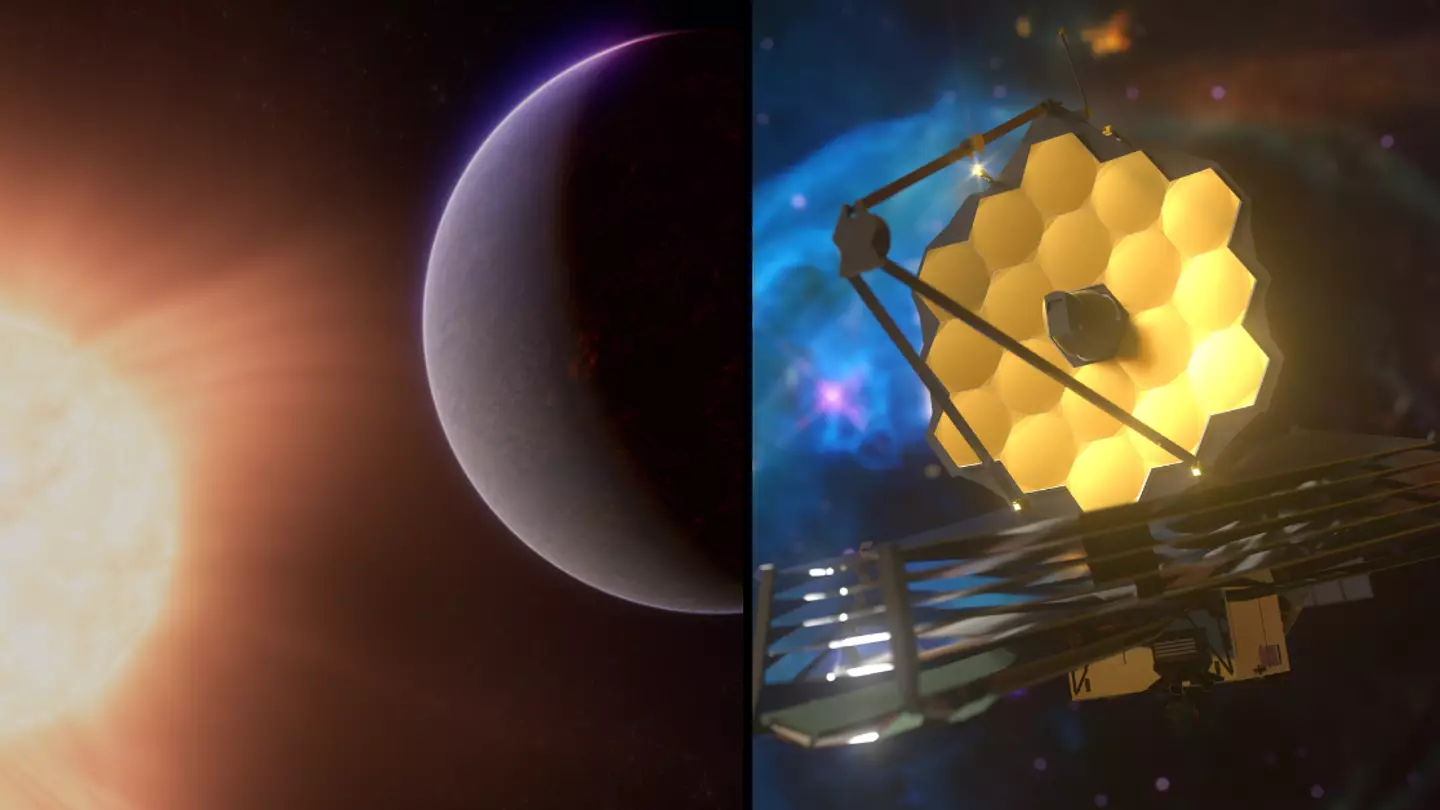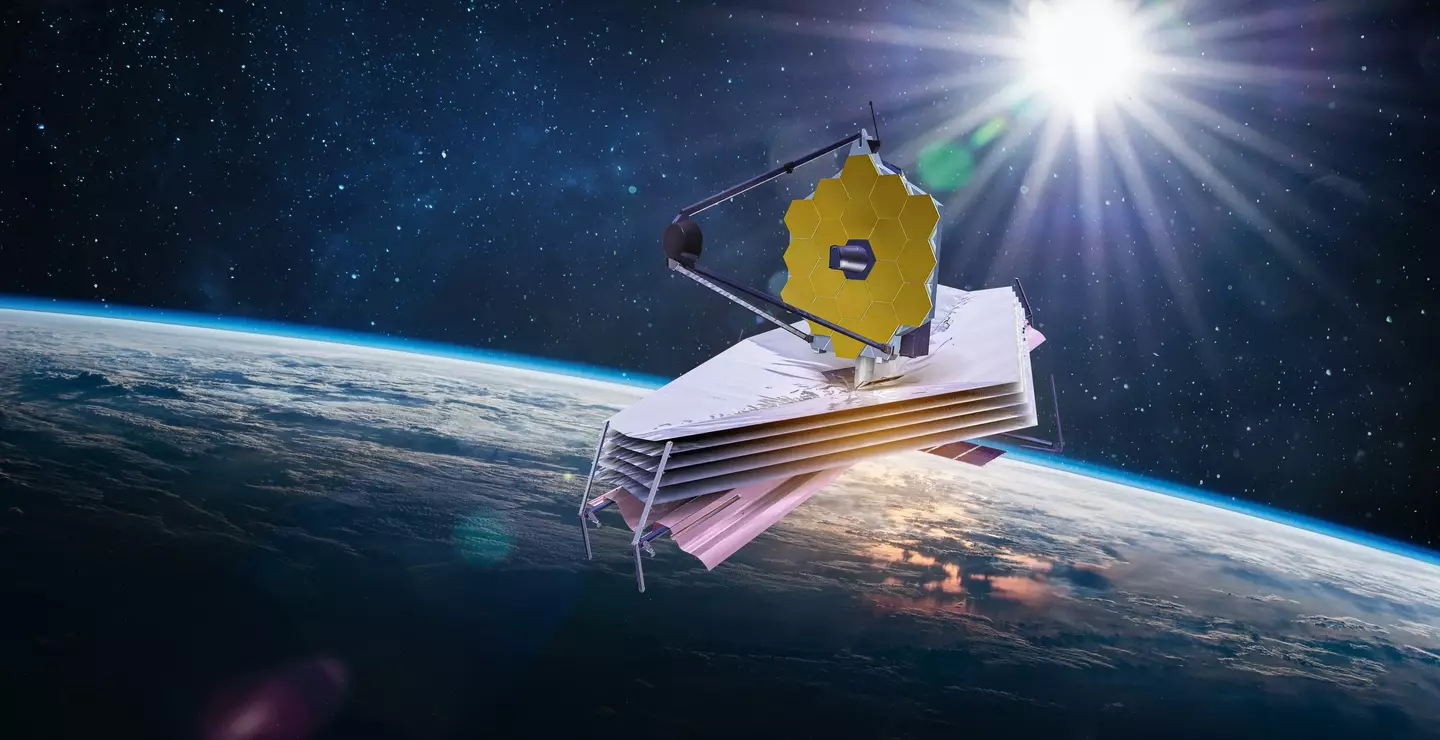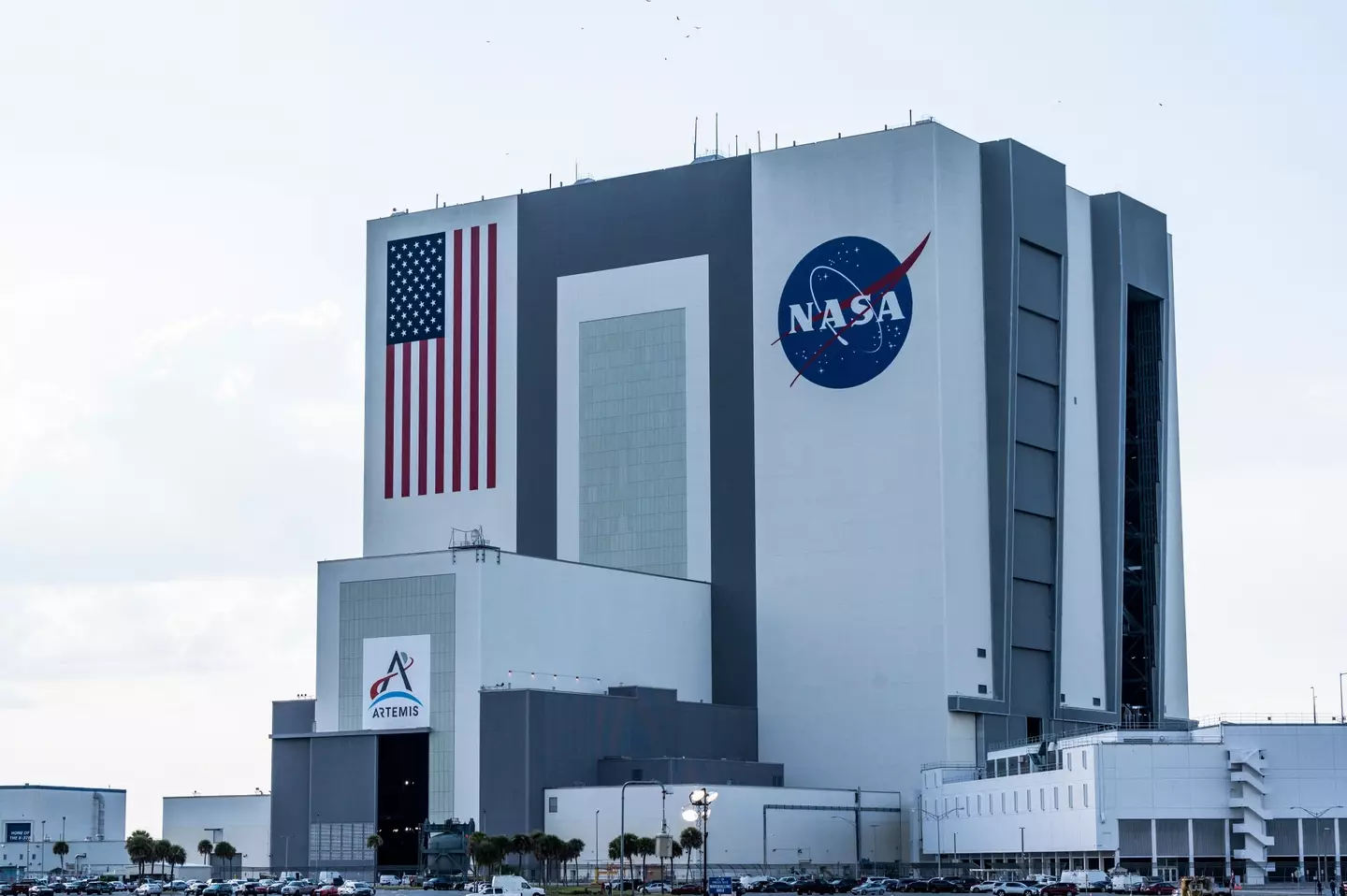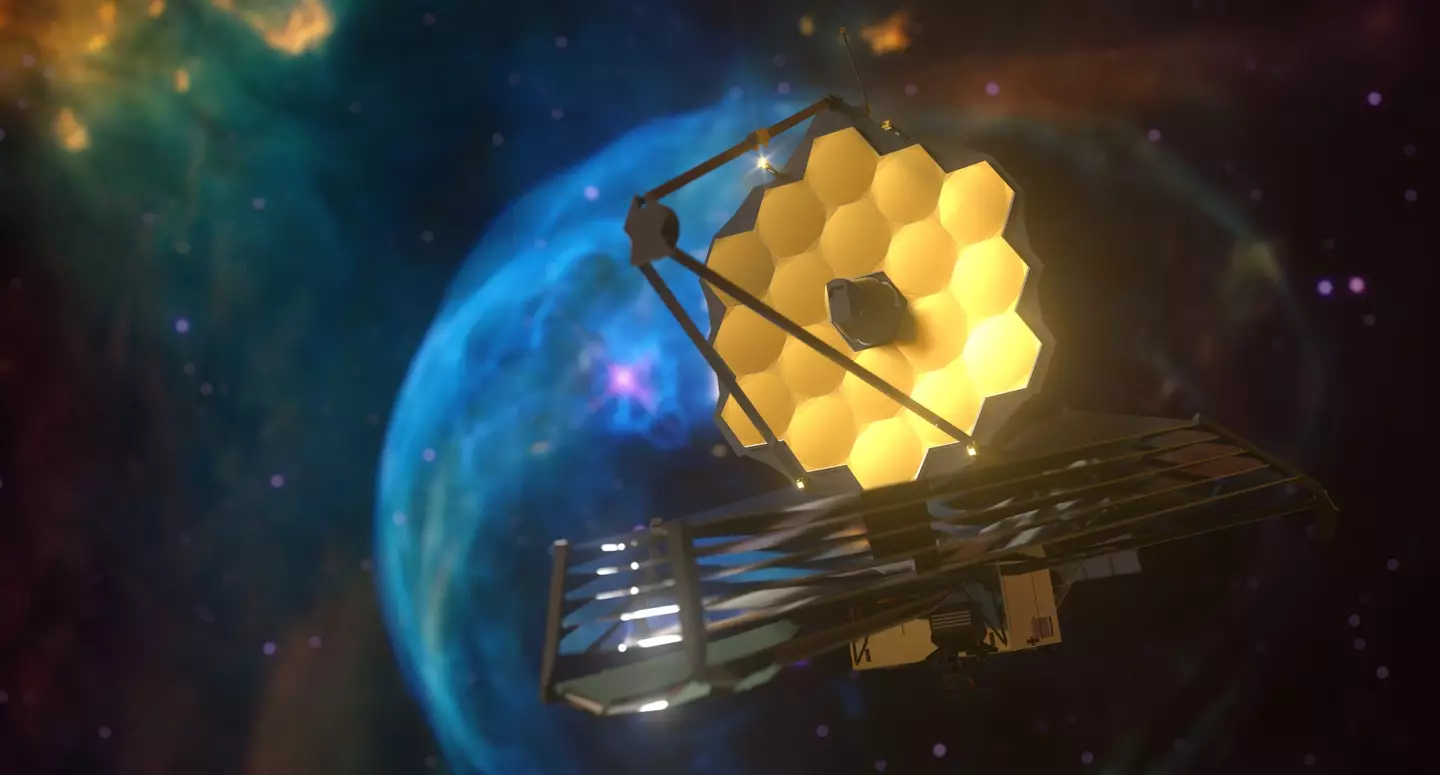
NASA scientists harnessing the power of the James Webb Space Telescope (JWST) have discovered signs of an atmosphere on a distant planet that is believed to be made entirely out of diamond.
Experts from the American space agency's Jet Propulsion Laboratory (JPL) in Pasadena, California, have been using the $10 billion piece of space equipment to expand our knowledge of the universe.
This has on occasion included shining a light on 'monstrous' supermassive black holes, making 'exciting' discoveries about them along the way.
Astronomers have also been using it to focus the JWST's attention on mapping the weather on planets that are hot enough to melt iron.
Advert
And of course, finding signs of alien life is one that we're all interested in more than ever.
The most recent discovery revolves around a 'super-Earth' planet that lies some 41 light-years from Earth.
Believed to be made largely out of the precious metal diamond, the planet was first discovered back in 2004.
But fast-forward two decades and signs of a potential atmosphere have been noticed on the surface of the planet thanks to the JWST.
Advert
Dubbed 55 Cancri e, NASA says the discovery is the 'best evidence to date for the existence of any rocky planet atmosphere outside our solar system'.
Renyu Hu, from the JPL, said: "Webb is pushing the frontiers of exoplanet characterisation to rocky planets. It is truly enabling a new type of science."

What is a 'super-Earth'?
Alongside being made out of diamonds, it truly does sound like something created for a science fiction novel.
Advert
But it's an actual term used by astronomers when categorising planets. And the logic is pretty straightforward.
"With a diameter nearly twice that of Earth and density slightly greater, the planet is classified as a super-Earth," NASA says.
Larger than Earth, smaller than Neptune, and likely similar in composition to the rocky planets in our solar system."
In the case of 55 Cancri e, calling it 'rocky' is somewhat misleading given its surface is most likely to be bubbling away with oceans of molten lava.

What's this about an atmosphere then?
NASA says that the question of whether or not 55 Cancri e has an atmosphere has gone unanswered since its discovery some 20 years ago.
Advert
The same goes for whether it could even have one give it's red hot and full of radiation.
Studies have hinted that it could have a rich atmosphere full of nitrogen, oxygen and carbon dioxide, but researchers had to remain open to the fact it could be bare.
Now, using JWST's NIRCam (Near-Infrared Camera) and MIRI (Mid-Infrared Instrument) NASA has found that the planet is cooler than expected which is a sign of some form of atmospheric presence including carbon monoxide or carbon dioxide.
“I’ve worked on this planet for more than a decade,” said Diana Dragomir, an exoplanet researcher at the University of New Mexico and co-author on the study. “It’s been really frustrating that none of the observations we’ve been getting have robustly solved these mysteries. I am thrilled that we’re finally getting some answers."

So it it habitable?
Not a chance, sadly.
Advert
The atmosphere that remains is likely to be a secondary layer with the primary atmosphere gone due to the intense heat and radiation on 55 Canri e.
With the presence of oceans made out of magma, it's also pretty volatile on the surface.
"The primary atmosphere would be long gone because of the high temperature and intense radiation from the star,” said co-author Aaron Bello-Arufe, also from NASA JPL.
“This would be a secondary atmosphere that is continuously replenished by the magma ocean. Magma is not just crystals and liquid rock; there’s a lot of dissolved gas in it, too.”

What can we learn then?
NASA says it is not really about whether it is habitable or not at this stage.
For those researching the planet, it provides a unique window to study interactions between atmospheres, surfaces, and interiors of rocky planets. They also think it could open the door to further insight in to the early conditions of Earth, Venus, and Mars, which are thought to have been covered in magma oceans far in the past.
“Ultimately, we want to understand what conditions make it possible for a rocky planet to sustain a gas-rich atmosphere: a key ingredient for a habitable planet,” said Hu.
Featured Image Credit: NASA, ESA, CSA, Ralf Crawford (STScI) / Getty Stock ImagesTopics: James Webb Space Telescope, NASA, Space, Technology, Science, US News